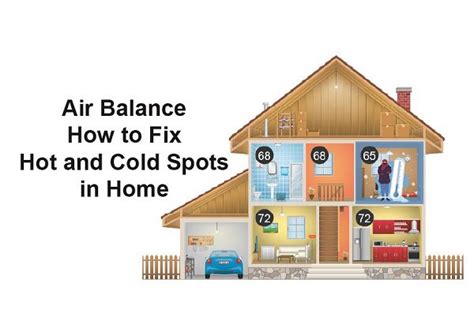How to Fix a Hot House: The Ultimate Cooling Guide
Summer heat can transform your home from a haven into an oven. A consistently hot house isn't just uncomfortable; it can impact your sleep, health, and even your energy bills. But don't despair! This comprehensive guide will equip you with the knowledge and strategies to cool down your home effectively, tackling the problem from multiple angles. We'll explore everything from simple, immediate fixes to more significant long-term solutions.
Understanding the Root Cause of a Hot House
Before diving into solutions, it's crucial to understand why your house is so hot. Is it poor insulation? A faulty air conditioning system? Excessive sun exposure? Identifying the root cause will allow you to target your efforts effectively and achieve lasting results. Common culprits include:
- Poor Insulation: Insufficient insulation in your walls, attic, and floors allows heat to penetrate easily.
- Inefficient Windows: Old, single-pane windows are notorious for heat transfer.
- Air Leaks: Gaps and cracks around doors, windows, and in your walls allow conditioned air to escape and hot air to enter.
- Direct Sunlight: Large windows facing west or south can receive intense afternoon sun, significantly raising the interior temperature.
- Inefficient HVAC System: An undersized, poorly maintained, or outdated air conditioning system might struggle to cool your home effectively.
Immediate Cooling Strategies: Quick Fixes for Instant Relief
When the heat is unbearable, you need immediate relief. Here are some quick fixes to lower the temperature rapidly:
- Close Curtains and Blinds: Blocking direct sunlight is the simplest and most effective way to reduce heat gain. Heavy, light-blocking curtains are ideal.
- Use Fans Strategically: Place fans in windows to create a cross-breeze, drawing hot air out and pulling in cooler air. Ceiling fans should be rotated counter-clockwise to push air downwards.
- Cool Down with Water: Take a cool shower or bath, or simply place bowls of ice water in front of fans to evaporate the water and cool the air.
- Turn Off Heat-Generating Appliances: Unnecessary lights, computers, and other electronics generate heat. Switching them off will lower the ambient temperature slightly.
Long-Term Cooling Solutions: Investing in Sustainable Comfort
For lasting comfort, you'll need to address the underlying causes of the heat problem. These are more significant investments, but they pay off in energy savings and increased comfort in the long run:
Improving Insulation
- Attic Insulation: Proper attic insulation is critical. Consider adding more insulation to reach the recommended R-value for your region.
- Wall Insulation: If your walls lack insulation, consider adding insulation through the existing cavities or exterior insulation. This is a more involved process, often requiring professional help.
- Floor Insulation: Insulating your floors, particularly those above a crawlspace or basement, can significantly reduce heat transfer.
Upgrading Windows
Replacing old, single-pane windows with energy-efficient, double- or triple-pane windows can dramatically reduce heat gain. Consider low-E coatings for enhanced insulation.
Sealing Air Leaks
Caulk and weatherstrip around doors, windows, and other potential air leak points. Consider professional energy audits to identify and seal all air leaks effectively.
HVAC System Upgrades
- Regular Maintenance: Regular maintenance, including filter changes, is essential for optimal HVAC performance.
- System Upgrades: If your air conditioning system is outdated or undersized, consider upgrading to a more efficient model.
How to Choose the Right Air Conditioning System?
Selecting the right air conditioning system depends on several factors:
- Size of Your Home: The system must be appropriately sized for your home's square footage to cool effectively without overworking.
- Climate: Consider your local climate and the average temperatures you experience.
- Energy Efficiency: Look for systems with high SEER (Seasonal Energy Efficiency Ratio) ratings for energy savings.
- Budget: Air conditioning systems range in price, so consider your budget when making your decision.
What are Some Energy-Efficient Cooling Techniques?
Beyond traditional cooling, many energy-efficient techniques can help keep your home cool:
- Strategic Landscaping: Planting trees and shrubs strategically can provide shade and reduce heat gain.
- Light-Colored Roofing: Light-colored roofs reflect more sunlight, keeping your home cooler.
- Smart Thermostat: A smart thermostat can learn your habits and optimize energy usage.
By combining immediate cooling strategies with long-term solutions, you can create a comfortable and energy-efficient home, even during the hottest summer months. Remember to prioritize identifying the root cause of your hot house issue to ensure lasting relief.

